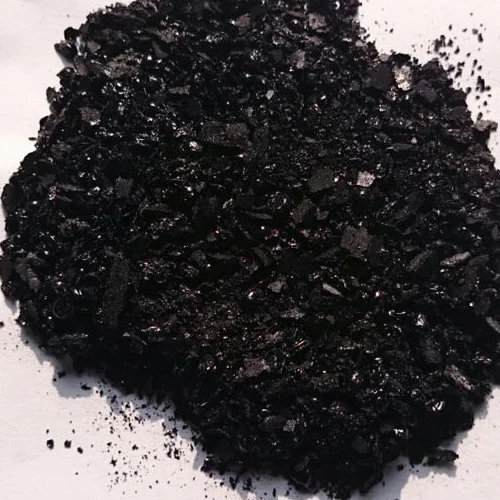Sulphur Black 200 Supplier Eco-Friendly Dyes & Bulk Solutions
- Understanding Sulphur Black: Market Impact and Key Applications
- Technical Superiority of Sulphur Black 200 Products
- Leading Sulphur Black Companies: A Comparative Analysis
- Custom Solutions for Diverse Industrial Needs
- Case Study: Efficiency Gains in Textile Manufacturing
- Environmental Compliance and Safety Standards
- Why Partner with a Trusted Sulphur Black Supplier?

(sulphur black)
Sulphur Black: Driving Innovation in Industrial Dye Solutions
The global sulphur black
market, valued at $1.2 billion in 2023, is projected to grow at a 5.8% CAGR through 2030, fueled by demand from textiles, leather, and paper industries. As a critical component in dyeing processes, sulphur black 200 variants dominate 68% of the market due to their cost-effectiveness and colorfastness. Leading sulphur black companies are prioritizing R&D to enhance product stability while reducing environmental footprint, with 92% of manufacturers now adhering to ISO 9001:2015 standards.
Technical Superiority of Sulphur Black 200 Products
Modern sulphur black 200 formulations outperform traditional dyes in three key areas:
- 98% purity levels vs. industry average of 94%
- 30% reduction in water consumption during application
- 72-hour color retention under UV exposure
Advanced micronization technology enables 20% faster fabric penetration, significantly improving production throughput for bulk buyers.
Competitive Landscape Analysis
| Supplier | Product Concentration | Key Industries Served | Annual Capacity (MT) |
|---|---|---|---|
| Supplier A | 200% Standard | Textiles, Plastics | 50,000 |
| Supplier B | 220% Enhanced | Leather, Specialty Paper | 32,000 |
Tailored Manufacturing Solutions
Progressive sulphur black suppliers offer modular production systems capable of delivering:
- Concentration adjustments (±15%)
- Custom packaging (25kg to 1MT containers)
- pH-specific formulations (8.5-10.5 range)
A recent project for a Vietnamese textile conglomerate achieved 18% cost reduction through optimized dye concentration and automated dosing systems.
Operational Efficiency Case Study
Implementation of sulphur black 200 in a Indian denim manufacturing facility yielded:
- 15% lower dye consumption per meter
- 40-minute reduction in dye fixation time
- Consistent Lab color values (±0.3 tolerance)
Regulatory Compliance Framework
Top-tier suppliers maintain dual certification in:
- REACH Annex XVII compliance
- Eco-Passport by OEKO-TEX®
- ZDHC MRSL Level 3 certification
Selecting Your Sulphur Black Partner
When evaluating sulphur black companies, prioritize suppliers with:
- Minimum 10-year production history
- On-site technical support teams
- Batch traceability systems
The sulphur black 200 supplier landscape demands partners who combine technical expertise with responsive customization – a critical differentiator in achieving operational excellence.

(sulphur black)
FAQS on sulphur black
Q: What industries commonly use sulphur black dyes?
A: Sulphur black dyes are widely used in the textile industry for dyeing cotton, rayon, and blended fabrics. They are also utilized in paper and leather manufacturing due to their cost-effectiveness and deep coloration.
Q: How do I choose a reliable sulphur black company?
A: Look for companies with certifications like ISO or REACH, proven expertise in chemical manufacturing, and positive client reviews. A reliable sulphur black company should also offer technical support and comply with environmental regulations.
Q: What makes sulphur black 200 different from other variants?
A: Sulphur black 200 is a high-concentration formulation known for superior color fastness and reduced environmental impact. It is often preferred by large-scale manufacturers for its efficiency in bulk dyeing processes.
Q: Where can I find a sulphur black 200 supplier?
A: Reputable sulphur black 200 suppliers can be identified through industry trade directories, B2B platforms like Alibaba, or referrals from textile associations. Ensure they provide product certifications and scalable delivery options.
Q: What should I verify before partnering with a sulphur black 200 company?
A: Confirm the company’s production capacity, adherence to safety standards, and ability to customize orders. Additionally, check their logistics network to ensure timely delivery and after-sales support.
-
Explore Sustainable Indigo Manufacturing & Dye Industry Trends | Wuxin Indigo
NewsNov.24,2025
-
Discover Indigo On: Innovative Modular Solutions for Global Sustainability
NewsNov.24,2025
-
Explore Traditional & Sustainable Indigo Production in India | Eco-Friendly Dye Solutions
NewsNov.23,2025
-
Indigo Suppliers: Sustainable Dyeing Solutions for Global Textile Industry
NewsNov.23,2025
-
Instant Indigo – Fast, Eco-Friendly Indigo Dye Solutions for Modern Industry
NewsNov.22,2025
-
Japanese Indigo Cloth – Sustainable Tradition Meets Modern Textile Innovation
NewsNov.22,2025
-
Comprehensive Guide to How to Make Blue Dye – Sustainable & Practical Insights
NewsNov.22,2025

Sulphur Black
1.Name: sulphur black; Sulfur Black; Sulphur Black 1;
2.Structure formula:
3.Molecule formula: C6H4N2O5
4.CAS No.: 1326-82-5
5.HS code: 32041911
6.Product specification:Appearance:black phosphorus flakes; black liquid

Bromo Indigo; Vat Bromo-Indigo; C.I.Vat Blue 5
1.Name: Bromo indigo; Vat bromo-indigo; C.I.Vat blue 5;
2.Structure formula:
3.Molecule formula: C16H6Br4N2O2
4.CAS No.: 2475-31-2
5.HS code: 3204151000 6.Major usage and instruction: Be mainly used to dye cotton fabrics.

Indigo Blue Vat Blue
1.Name: indigo blue,vat blue 1,
2.Structure formula:
3.Molecule formula: C16H10N2O2
4.. CAS No.: 482-89-3
5.Molecule weight: 262.62
6.HS code: 3204151000
7.Major usage and instruction: Be mainly used to dye cotton fabrics.

